-
Halo Structures in p-Shell Hypernuclei with Natural Orbitals Phys. Lett. B (IF 4.5) Pub Date : 2025-12-07 Marco Kn, Robert Roth
-
Revealing nucleon-nucleon correlation effects through sub-Coulomb transfer reactions in 92Mo+54Fe Phys. Lett. B (IF 4.5) Pub Date : 2025-12-07 T. Mijatović, S. Szilner, L. Corradi, F. Galtarossa, G. Pollarolo, G. Colucci, E. Fioretto, A. Goasduff, A. Gottardo, D. Jelavić Malenica, M. Milin, G. Montagnoli, D. Montanari, N. Soić, A.M. Stefanini, J.J. Valiente Dobón
-
Ab Initio Calculations of the Carbon and Oxygen Isotopes: Energies, Correlations, and Superfluid Pairing Phys. Lett. B (IF 4.5) Pub Date : 2025-12-07 Young-Ho Song, Myungkuk Kim, Youngman Kim, Kihyeon Cho, Serdar Elhatisari, Dean Lee, Yuan-Zhuo Ma, Ulf-G Meißner
-
Influence of the Coulomb field of foil nuclei on half-lives of cluster states in fission fragments Phys. Lett. B (IF 4.5) Pub Date : 2025-12-07 F.O. Otakhonov, Sh A. Kalandarov, G.G. Adamian, N.V. Antonenko, Yu V. Pyatkov, D.V. Kamanin
-
Vacuum Geometry of the Standard Model Phys. Lett. B (IF 4.5) Pub Date : 2025-12-06 Yang-Hui He, Vishnu Jejjala, Brent D. Nelson, Hal Schenck, Michael Stillman
-
Heat Capacity and the Violation of Scaling Laws in Gravitational System Phys. Lett. B (IF 4.5) Pub Date : 2025-12-06 Shi-Bei Kong
-
Low-uncertainty measurement of the 239Pu(n,f) cross section at n_TOF in a very broad energy range from 0.02 eV up to 10 MeV Phys. Lett. B (IF 4.5) Pub Date : 2025-12-05 A. Sánchez-Caballero, D. Cano-Ott, E. Mendoza, V. Alcayne, J. Andrzejewski, R. Capote, T. Cardinaels, P. Dries, J. García Pérez, A. Gawlik-Ramięga, E. González-Romero, J. Heyse, G. Leinders, T. Martínez, G. Noguere, C. Paradela, A. Pérez De Rada Fiol, J. Perkowski, A. Plompen, P. Schillebeeckx, G. Sibbens, K. Van Hecke, D. Vanleeuw, K. Verguts, M. Verwerft, D. Villamarin, R. Wynants, O. Aberle, S.
-
Barnett effect as a new source of magnetic field in heavy-ion collisions Phys. Lett. B (IF 4.5) Pub Date : 2025-12-05 Dushmanta Sahu
-
Emergent spin polarization from ρ meson condensation in rotating hadronic matter Phys. Lett. B (IF 4.5) Pub Date : 2025-12-05 Kshitish Kumar Pradhan, Dushmanta Sahu, Raghunath Sahoo
-
Long-lived quasinormal modes, grey-body factors and absorption cross-section of the black hole immersed in the Hernquist galactic halo Phys. Lett. B (IF 4.5) Pub Date : 2025-12-04 B.C. Lütfüoğlu
-
Polarized electromagnetic radiation by chiral media with time-dependent chiral chemical potential Phys. Lett. B (IF 4.5) Pub Date : 2025-12-04 Kirill Tuchin
-
Neutrino phenomenology and Dark matter in a left-right asymmetric model with non-holomorphic modular A4 group Phys. Lett. B (IF 4.5) Pub Date : 2025-12-04 Bhabana Kumar, Mrinal Kumar Das
-
Anomaly in first-forbidden transitions of 176Lu Phys. Lett. B (IF 4.5) Pub Date : 2025-12-04 Jing-Wen Ran, Long-Jun Wang
-
Geometric representation of CP phases δPDG, δKM in flavor mixing matrix and its sum rule by alternative unitarity triangle and quadrangle Phys. Lett. B (IF 4.5) Pub Date : 2025-12-04 Masaki J S Yang
-
ACT Constraints on Marginally Deformed Starobinsky Inflation Phys. Lett. B (IF 4.5) Pub Date : 2025-12-03 Jureeporn Yuennan, Farruh Atamurotov, Phongpichit Channuie
-
Rainbow f(R) Inflation: de Sitter-Quintessence Phases Phys. Lett. B (IF 4.5) Pub Date : 2025-12-03 A.I. Keskin
-
Chronology Protection of Rotating Black Holes in a Viable Lorentz-Violating Gravity Phys. Lett. B (IF 4.5) Pub Date : 2025-12-02 Mu-In Park, Hideki Maeda
-
Dark walker in the early universe: A strongly coupled sector model Phys. Lett. B (IF 4.5) Pub Date : 2025-12-02 Chen Yang
-
Scaling dimension of operators from the black hole interior Phys. Lett. B (IF 4.5) Pub Date : 2025-12-01 Yoon-Seok Choun, Ki-Seok Kim, Sang-Jin Sin, Taewon Yuk
-
Exploiting ν-dependence of projected energy correlators in HICs Phys. Lett. B (IF 4.5) Pub Date : 2025-12-01 Ankita Budhraja, Balbeer Singh
-
Rapidity spectra in high-energy collisions and longitudinal nuclear suppression from nonadditive statistics Phys. Lett. B (IF 4.5) Pub Date : 2025-11-30 Trambak Bhattacharyya, Maciej Rybczyński, Zbigniew Włodarczyk
-
Boundary Integrability from the Fuzzy Three Sphere Phys. Lett. B (IF 4.5) Pub Date : 2025-11-30 T. Gombor, A. Holguin
-
First investigation of prompt neutrons from spontaneously fissioning isomers produced in multinucleon transfer reactions Phys. Lett. B (IF 4.5) Pub Date : 2025-11-30 B. Sailaubekov, A.I. Svirikhin, H.M. Devaraja, A.V. Isaev, R.S. Mukhin, M.A. Bychkov, M.L. Chelnokov, V.I. Chepigin, V.D. Danilkin, I.N. Izosimov, Sh A. Kalandarov, D.E. Katrasev, A.A. Kuznetsova, O.N. Malyshev, A.G. Popeko, Yu A. Popov, E.A. Sokol, E. Teymurov, M.S. Tezekbayeva, I.I. Ulanova
-
Investigation of T c s 0 * ( 2870 ) 0 in pp collisions at s = 7 TeV with the PACIAE model Phys. Lett. B (IF 4.5) Pub Date : 2025-11-30 Qiang Wang, Zhi-Lei She, An-Ke Lei, Dai-Mei Zhou, Wen-Chao Zhang, Hua Zheng, Yu-Liang Yan, Ben-Hao Sa
We have used the parton and hadron cascade model PACIAE together with the Dynamically Constrained Phase-space Coalescence model (DCPC) to study the Tcs0*(2870)0 production in pp collision at s = 7 TeV, following the LHCb observation of Tcs0*(2870)0 in the B−→D−D0KS0 decays in pp collisions at s = 7, 8, and 13 TeV [PRL 134(2025)101901]. The final hadronic states of the pp collisions at s = 7 TeV are
-
Quasiparticle pairing encoding of atomic nuclei for quantum annealing Phys. Lett. B (IF 4.5) Pub Date : 2025-11-30 Emanuele Costa, Axel Pérez-Obiol, Javier Menéndez, Arnau Rios, Artur García-Sáez, Bruno Juliá-Díaz
Quantum computing is emerging as a promising tool in nuclear physics. However, the cost of encoding fermionic operators hampers the application of algorithms in current noisy quantum devices. In this work, we analyze an encoding scheme based on pairing nucleon modes. This approach significantly reduces the complexity of the encoding, while maintaining a high accuracy for the ground states of semimagic
-
Observation of $W^{+}W^{-}\\gamma$ production in $pp$ collisions at $\\sqrt{s}$ = 13 TeV with the ATLAS detector and constraints on anomalous quartic gauge-boson couplings Phys. Lett. B (IF 4.5) Pub Date : 2025-11-29 ATLAS Publications
This Letter reports the observation of W+W−γ triboson production in 140 fb−1 of data collected by the ATLAS detector from proton–proton collisions at a centre-of-mass energy of s = 13 TeV at the LHC. Events with an opposite-charge eμ pair, a high transverse-momentum photon, and significant missing transverse momentum are considered. The observed (expected) significance of the signal is 5.9 (6.0) standard
-
Understanding the correlation between elliptic and triangular flow Phys. Lett. B (IF 4.5) Pub Date : 2025-11-29 Mubarak Alqahtani, Jean-Yves Ollitrault
The relative correlation between the magnitudes of elliptic flow (v2) and triangular flow (v3) has been accurately measured in nucleus-nucleus collisions at the LHC collider. As a function of the centrality of the collision, it changes sign and varies non-monotonically. We show that this is naturally explained by two combined effects. The first effect is a skewness in initial-state fluctuations, which
-
First Nucleon Gluon PDF from Large Momentum Effective Theory Phys. Lett. B (IF 4.5) Pub Date : 2025-11-29 William Good, Fei Yao, Huey-Wen Lin
We report the first nucleon gluon parton distribution function (PDF) using Large-Momentum Effective Theory (LaMET). We focus on the gluon operator which was demonstrated to have the best signal-to-noise in the previous attempt [1] in computing gluon PDFs using LaMET. We compute the corresponding Wilson coefficients needed for the hybrid-renormalized matrix elements and the matching kernel to convert
-
Yang-Baxter deformations of the OSP(1|2) WZW model Phys. Lett. B (IF 4.5) Pub Date : 2025-11-27 Ali Eghbali, Yaghoub Samadi, Adel Rezaei-Aghdam
We obtain inequivalent classical r-matrices of the osp(1|2) Lie superalgebra as real solutions of the graded (modified) classical Yang-Baxter equation, in such a way that the corresponding automorphism transformation is employed. Then, Yang-Baxter deformations of the Wess-Zumino-Witten model based on the OSP(1|2) Lie supergroup are specified by super skew-symmetric classical r-matrices. In this regard
-
Evidence of coexistence of chiral, electric, magnetic, and anti-magnetic rotations as well as noncollective structure Phys. Lett. B (IF 4.5) Pub Date : 2025-11-27 S.Y. Wang, Y.M. Zhang, X.G. Wu, H. Jia, B. Qi, C. Liu, W.Z. Xu, Z.Q. Li, S. Wang, D.P. Sun, N.B. Zhang, R.J. Guo, Y. Zheng, C.B. Li, G.Y. Li
Low-, medium-, and high-spin states in 119Sb were populated using the reaction 116Cd(7Li, 4n) at beam energies of 34, 42, and 50 MeV, respectively. A pair of nearly degenerate ΔI=1 doublet, two ΔI=1, and two ΔI=2 bands as well as a number of irregular levels have been observed. These structures are interpreted as chiral, electric, magnetic, and anti-magnetic rotations as well as noncollective structure
-
How Well Do We Know the Scalar-Induced Gravitational Waves? Phys. Lett. B (IF 4.5) Pub Date : 2025-11-27 A.J. Iovino, S. Matarrese, G. Perna, A. Ricciardone, A. Riotto
Gravitational waves sourced by amplified scalar perturbations are a common prediction across a wide range of cosmological models. These scalar curvature fluctuations are inherently nonlinear and typically non-Gaussian. We argue that the effects of non-Gaussianity may not always be adequately captured by an expansion around a Gaussian field, expressed through nonlinear parameters such as fNL. As a consequence
-
Action-Angle Variables in Quantum Gravity Phys. Lett. B (IF 4.5) Pub Date : 2025-11-26 Jarmo
We formulate an argument, based on the use of the action-angle variables and the Bohr-Sommerfeld quantization rule, to the effect that if there exists the smallest possible non-zero area, there also exists, for massive particles, the largest possible observable speed, which is a bit less than the speed of light.
-
Thermoelectric figure of merit and the deconfinement phase transition Phys. Lett. B (IF 4.5) Pub Date : 2025-11-26 Kamaljeet Singh, Raghunath Sahoo
Thermoelectric phenomena are traditionally associated with the interconversion of thermal and electrical energy in many-body systems. In the context of high-temperature quantum chromodynamics (QCD) matter produced in relativistic heavy-ion collisions, thermoelectric responses can provide insight into the evolving microscopic dynamics and the redistribution of effective degrees of freedom across the
-
On the contribution from the light quarks to H → γγ, γZ Phys. Lett. B (IF 4.5) Pub Date : 2025-11-26 Marc Knecht, Baiyi Qian
This Letter addresses the contribution from the light u, d, s quarks to the amplitudes for the decay modes of the Brout-Englert-Higgs scalar boson H into two photons (H → γγ) or to a photon and a neutral weak gauge boson (H → γZ), taking into account the non-perturbative aspects of QCD. Contrary to a recent claim, the contribution from the light quarks does not vanish. Rather, it is shown that, in
-
Power Law Plateau Inflation and Primordial Gravitational Waves in the light of ACT Phys. Lett. B (IF 4.5) Pub Date : 2025-11-25 Abolhassan Mohammadi, Yogesh, Anzhong Wang
We investigate Power-Law Plateau (PLP) inflation in standard gravity and its consistency with ACT DR6 data. While many inflationary models, including the Starobinsky inflation, are disfavored by ACT observations, the PLP potential remains viable across a broad range of its parameters. Then, the dynamics of the reheating phase are investigated, with a primary focus on the reheating temperature and its
-
Systematic analysis of the transition form factors of Bc to D-wave charmonia and corresponding semileptonic decays Phys. Lett. B (IF 4.5) Pub Date : 2025-11-25 Jie Lu, Dian-Yong Chen, Guo-Liang Yu, Zhi-Gang Wang
In this article, the vector, axial vector and tensor form factors of Bc to D-wave charmonia ψJ (J=1,2,3) and ηc2 are analyzed within the framework of three-point QCD sum rules. With the predicted vector and axial vector form factors, we study the decay widths and branching ratios of semileptonic decays Bc→ψJlνl¯ and Bc→ηc2lνl¯. Our results indicate that the semileptonic decay branching ratios of Bc
-
On the CP Nature of the ‘95 GeV’ Anomalies Phys. Lett. B (IF 4.5) Pub Date : 2025-11-24 Tanmoy Mondal, Stefano Moretti, Prasenjit Sanyal
Under the assumption that the various evidences of a ‘95 GeV’ excess, seen in data at the Large Electron Positron (LEP) collider as well as the Large Hadron Collider (LHC), correspond to actual signals of new physics Beyond the Standard Model (BSM), we characterise the underlying particle explaining these anomalies in terms of its Charge/Parity (CP) quantum numbers. In doing so, we use χ2 fits to test
-
Application of the microscopic optical potential of chiral effective field theory in astrophysical neutron-capture reactions Phys. Lett. B (IF 4.5) Pub Date : 2025-11-24 Bing Wang, Dong Bai, Yi Xu
A state-of-the-art microscopic global nucleon-nucleus optical potential has been developed by Whitehead, Lim, and Holt (WLH) within the framework of many-body perturbation theory, incorporating realistic nuclear interactions derived from chiral effective field theory. Given its potentially greater predictive power for reactions involving exotic isotopes, we apply it to the calculations of astrophysical
-
Assessing lattice QCD charm space diffusion coefficient and thermalization time by mean of D meson observables at LHC Phys. Lett. B (IF 4.5) Pub Date : 2025-11-24 Maria Lucia Sambataro, Vincenzo Minissale, Salvatore Plumari, Vincenzo Greco
A central goal in the study of heavy-flavour production is to determine the interaction strength between Heavy Quarks (HQs) and the Quark-Gluon Plasma (QGP), quantified by the spatial diffusion coefficient Ds(T). Recent lattice QCD (lQCD) results with dynamical fermions suggest a remarkably low value of 2πTDs ≈ 1 at T=Tc for charm quarks - significantly lower than both quenched QCD estimates and most
-
Mirror energy differences between 43Ti and 43Sc: A direct insight into the nuclear wave functions Phys. Lett. B (IF 4.5) Pub Date : 2025-11-24 K. Rezynkina, A. Illana Sison, S.M. Lenzi, F. Recchia, P. Ruotsalainen, P. Aguilera, K. Auranen, J. Benito, S. Carollo, M.L. Cortes, R. Escudeiro, T. Grahn, P.T. Greenlees, J. Ha, R. Julin, H. Joukainen, H. Jutila, M. Leino, J. Louko, M. Luoma, D. Napoli, J. Ojala, J. Pakarinen, S. Pigliapoco, A. Poves, P. Rahkila, M. Sandzelius, J. Sarén, A. Tolosa-Delgado, J. Uusitalo, G.L. Zimba
The structure of the 2243Ti21 nucleus has been explored employing correlations between delayed and prompt γ rays, leading to a substantial extension of its positive-parity yrast band up to 25/2+. New states were were identified using the isomer-tagging technique together with γ−γ coincidences and were compared to the analogue states in the mirror nucleus 2143Sc22. The Mirror Energy Differences (MED)
-
Relativistic Covariance and Nonlinear Quantum Mechanics: Tomonaga-Schwinger Analysis Phys. Lett. B (IF 4.5) Pub Date : 2025-11-24 Stephen Hsu
We use the Tomonaga–Schwinger (TS) formulation of quantum field theory to determine when state-dependent additions to the local Hamiltonian density (i.e., modifications to linear Schrödinger evolution) violate relativistic covariance. We derive new operator integrability conditions required for foliation independence, including the Fréchet derivative terms that arise from state-dependence. Nonlinear
-
Starobinsky potential and power suppression in hybrid Loop Quantum Cosmology Phys. Lett. B (IF 4.5) Pub Date : 2025-11-24 Marceau Henry, Guillermo A. Mena Marugán, Antonio Vicente-Becerril
We study the effect on the primordial tensor power spectrum of varying the number of e-folds during slow-roll inflation in Loop Quantum Cosmology with a Starobinsky potential. Using the hybrid quantization approach, we derive the effective mass governing tensor mode evolution. The choice of vacuum state is crucial, especially since the preinflationary phase predicted by Loop Quantum Cosmology invalidates
-
Probing maximal flavor changing $Z'$ in $U(1)_{L_\mu-L_\tau}$...ß at $\mu$TRISTAN Phys. Lett. B (IF 4.5) Pub Date : 2025-11-22 Fei Huang, Jin Sun
We explore the potential to detect the U(1)Lμ−Lτ model featuring triplet scalars Δ at the μTRISTAN collider. The new gauge boson Z′, arising from the spontaneous breaking of U(1)Lμ−Lτ, can exhibit maximal flavor changing interactions under the exchange symmetry, while Δ mediates the flavor conserving interactions. The absence of muon (g−2)μ can be explained by interference effects arising from opposite
-
Probing symmetry energy slope with mirror nuclei: unmeasured charge radii of proton-rich nuclei from binding energies Phys. Lett. B (IF 4.5) Pub Date : 2025-11-22 X. Liu, W. Chen, H. He, H. Zheng, X. Xu, W. Lin, J. Han, G. Qu, P. Ren, X. Zhang
Knowledge of the slope of nuclear symmetry energy at the saturation density L is crucial for guiding the extrapolation of the symmetry energy to both lower and higher densities, yet its value remains with significant uncertainty. A promising probe for constraining L is the difference in mirror pair root-mean-square (rms) charge radii ΔRch. However, the ΔRch data are scarce due to the difficulty in
-
Effects of DESI and GW observations on f(T) gravitational baryogenesis Phys. Lett. B (IF 4.5) Pub Date : 2025-11-21 Sai Swagat Mishra, N.S. Kavya, P.K Sahoo
Baryogenesis refers to the physical process responsible for generating the observed baryon asymmetry in the early universe. The presence of a nonzero baryon number density suggests a surplus of matter over antimatter. In this study, a novel approach is proposed to verify the direct consequences of late-time observations on gravitational baryogenesis. The incorporation of two key data sets, DESI and
-
Ultra-relativistic journeys through compact astrophysical objects Phys. Lett. B (IF 4.5) Pub Date : 2025-11-21 Shahar Hod
It has recently been proved that, for constant density stars, there is a critical value Λ*=1 for the dimensionless density parameter Λ ≡ 4πR2ρmax of the star above which the asymptotically measured travel time Ts along a semi-circular trajectory that connects two antipodal points on the surface of the star is shorter than the travel time Tc along the (shorter) straight-line trajectory that connects
-
Gravitational waves in minimal Maxwell f(R) gravity Phys. Lett. B (IF 4.5) Pub Date : 2025-11-21 Salvatore Capozziello, Qingyu Gan
We discuss the conversion mechanism from scalar field to gravitational waves in magnetic background in f(R) gravity minimal coupled to the Maxwell electrodynamics. Applying the conversion in early universe with primordial magnetic field and the neutron star with strong magnetosphere, the generated gravitational waves, converted from the scalar field, exhibit distinct power spectra which can be potentially
-
Gamow shell model predictions for six-proton unbound nucleus 20Si Phys. Lett. B (IF 4.5) Pub Date : 2025-11-21 J.L. Wang, M.R. Xie, K.H. Li, P.Y. Wang, N. Michel, Q. Yuan, J.G. Li
Proton-rich nuclei beyond the proton drip line are of great interest in nuclear structure physics, due to exotic phenomena such as proton emissions and the Thomas-Ehrman shift (TES). In this work, we employ the Gamow shell model (GSM) to investigate the structure and decay of 20Si, a candidate for six-proton (6p) emission, which can be produced via two-neutron knockout from the drip line nucleus 22Si
-
Search for Lepton Flavor Violating Signals at the Future Electron-Proton Colliders Phys. Lett. B (IF 4.5) Pub Date : 2025-11-21 Anjan Kumar Barik, Atri Dey, Tousik Samui
The search for lepton flavor violation (LFV) is a powerful probe to look for new physics beyond the Standard Model. We explored the possibility of searches for LFV Z boson couplings to electron and muon pairs at the upcoming electron-proton colliders, namely the Large Hadron Electron Collider (LHeC) and the Future Circular lepton-hadron Collider (FCC-eh). We employed the study via a single muon plus
-
Renormalizable quantum field theory in curved spacetime with external two-form field Phys. Lett. B (IF 4.5) Pub Date : 2025-11-20 Ioseph L. Buchbinder, Thomas M. Sangy, Ilya L. Shapiro
We argue that the renormalizability of interacting quantum field theory on the curved-space background with an additional external antisymmetric tensor (two-form) field requires nonminimal interaction of the antisymmetric field with quantum fermions and scalars. The situation is qualitatively similar to the metric and torsion background. In both cases, one can explore the renormalization group running
-
Exclusive photoproduction of excited ρ mesons decaying to four pions in ultraperipheral Pb-Pb collisions at s NN = 5.02 TeV Phys. Lett. B (IF 4.5) Pub Date : 2025-11-20 S. Acharya, D. Adamová, A. Agarwal, G. Aglieri Rinella, L. Aglietta, M. Agnello, N. Agrawal, Z. Ahammed, S. Ahmad, S.U. Ahn, I. Ahuja, A. Akindinov, V. Akishina, M. Al-Turany, D. Aleksandrov, B. Alessandro, H.M. Alfanda, R. Alfaro Molina, B. Ali, A. Alici, N. Alizadehvandchali, A. Alkin, J. Alme, G. Alocco, T. Alt, A.R. Altamura, I. Altsybeev, J.R. Alvarado, M.N. Anaam, C. Andrei, N. Andreou, A. Andronic
The intense photon fluxes from relativistic nuclei provide an opportunity to study photonuclear interactions in ultraperipheral collisions. In particular, it allows for the investigations of excited, light-flavour vector mesons. The measurement of coherently photoproduced π+π−π+π− final states in ultraperipheral Pb–Pb collisions at sNN=5.02 TeV is presented for the first time. The cross section, dσ/dy
-
A new exact rotating spacetime in vacuum: The Kerr–Levi-Civita spacetime Phys. Lett. B (IF 4.5) Pub Date : 2025-11-19 José Barrientos, Adolfo Cisterna, Mokhtar Hassaine, Keanu Müller, Konstantinos Pallikaris
We construct a new rotating solution of Einstein’s theory in vacuum by exploiting the Lie point symmetries of the field equations in the complex potential formalism of Ernst. In particular, we perform a discrete symmetry transformation, known as inversion, of the gravitational potential associated with the Kerr metric. The resulting metric describes a rotating generalization of the Schwarzschild–Levi-Civita
-
On the Effects of Elementary and Bound State Fields on Vacuum Stability in [formula omitted] Production at the LHC Phys. Lett. B (IF 4.5) Pub Date : 2025-11-19 Yoshiki Matsuoka
The recent report by the CMS Collaboration on the excess of top and anti-top pair production is examined with regard to the improvement of vacuum stability under two simple scenarios: one with the existence of toponium (ηt), and the other with an additional elementary field (Ψ). In both cases, the values of each coupling constant are restricted by the Multicritical Point Principle (MPP).
-
Emergence of running vacuum energy in f(R, T) gravity : Observational constraints Phys. Lett. B (IF 4.5) Pub Date : 2025-11-19 Ahmed Errahmani, Mounia Magrach, Safae Dahmani, Amine Bouali, Taoufik Ouali
In this work, we present a new analysis for f(R, T) gravity by exploring the energy momentum tensor. We demonstrate that f(R, T) gravity with the form f(R,T)=R+2κ2λT−2Λ is equivalent to Running Vacuum Energy (RVE), which interacts with the components of the cosmic fluid, namely dark matter and radiation. Interestingly, the form of such interaction is inferred from the non-conservation of the stress
-
Open strings and heterotic instantons Phys. Lett. B (IF 4.5) Pub Date : 2025-11-19 Rafael Álvarez-García, Christian Kneißl, Jacob M. Leedom, Nicole Righi
Motivated by closed string perturbation theory arguments by S. Shenker, we consider non-perturbative effects of characteristic strength O(e−1/gs), with gs the closed string coupling constant, in supersymmetric critical heterotic string theories. We argue that in 10D such effects arise from heterotic “D-instantons,” i.e. heterotic disk diagrams, whose existence relies on a non-trivial interplay between
-
Probing chaos in Schwarzschild-de Sitter spacetime: The role of black hole and cosmological horizons Phys. Lett. B (IF 4.5) Pub Date : 2025-11-19 Surojit Dalui, Soumya Bhattacharya, Chiranjeeb Singha
In this paper, we study the motion of a massless, chargeless particle in Schwarzschild-de Sitter spacetime, revealing exponential radial growth and potential chaos in an integrable system. Poincaré sections show regular Kolmogorov–Arnold–Moser (KAM) tori when black hole and cosmological horizons are distant, but distortions and chaos emerge as they converge. As the horizons coincide, the Poincaré sections
-
Ab initio computations of the fourth-order charge density moments of 48Ca and 208Pb Phys. Lett. B (IF 4.5) Pub Date : 2025-11-17 T. Miyagi, M. Heinz, A. Schwenk
Neutron skins of neutron-rich nuclei connect nuclei with the matter in neutron stars. High-precision measurements of nuclear charge densities to extract higher-order moments are proposed to be sensitive to neutron radii and skin thicknesses. We investigate the charge density of 48Ca and 208Pb, leading candidates for such studies, with ab initio nuclear structure calculations. We find strong correlations
-
An ‘exceptional’ form for symmetries in maximal supergravity Phys. Lett. B (IF 4.5) Pub Date : 2025-11-17 Sudarshan Ananth, Nipun Bhave
The global symmetries in maximally supersymmetric theories of gravity in d ≥ 4 are shown to have a universal form in light-cone superspace. The procedure for deriving an all order expression for the d=4 case is also discussed.
-
Production of [formula omitted] in electron-positron collisions Phys. Lett. B (IF 4.5) Pub Date : 2025-11-17 Xiao-Yu Zhang, Yi-Lin Song, Feng-Kun Guo
The discoveries of the hidden-charm Pc pentaquarks by the LHCb Collaboration have been not confirmed by other experiments yet. It is desirable to investigate the feasibility of observing them in other experiments. We present an order-of-magnitude estimate of the cross section of the e+e−→J/ψpp¯ process, where the hidden-charm pentaquarks may be searched for, and find it to be of O(4fb) when the e+e−
-
Ab initio study in the island of inversion within the two-major-shell valence space Phys. Lett. B (IF 4.5) Pub Date : 2025-11-17 X.C. Cao, C.F. Jiao
We present an ab initio study of nuclear structure in the island of inversion around neutron number N=20, using multishell effective Hamiltonians derived from the valence-space in-medium similarity renormalization group approach combined with the quantum-number projected generator coordinate method. By progressively expanding the valence space from the sd shell to the intermediate sdf7/2p3/2 space



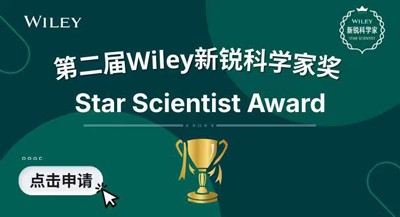



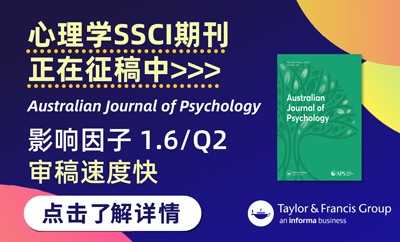



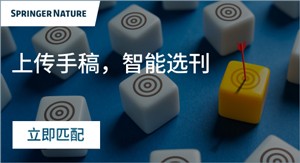
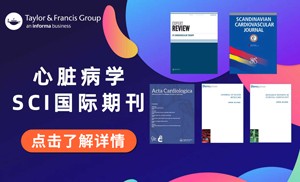




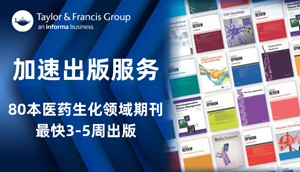
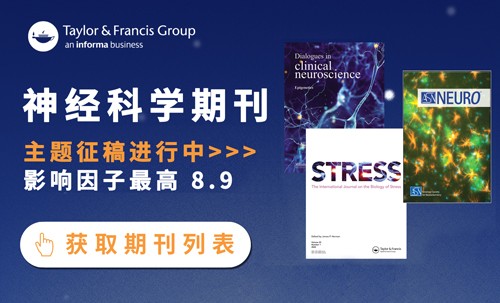

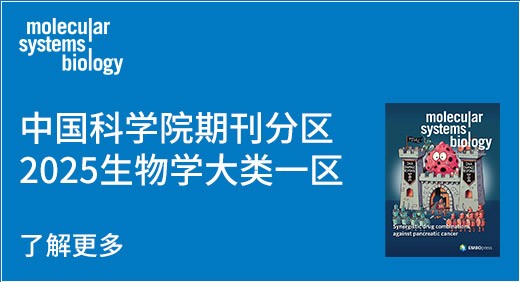
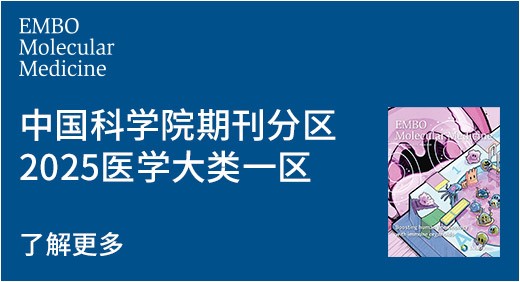
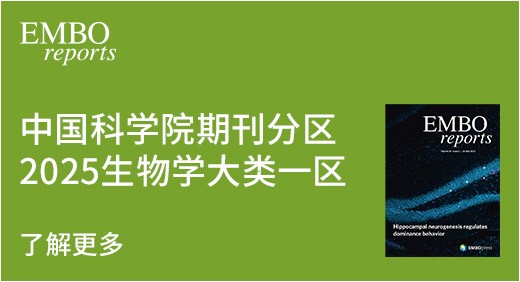




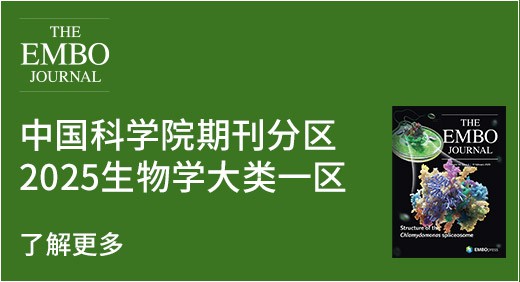



























 京公网安备 11010802027423号
京公网安备 11010802027423号